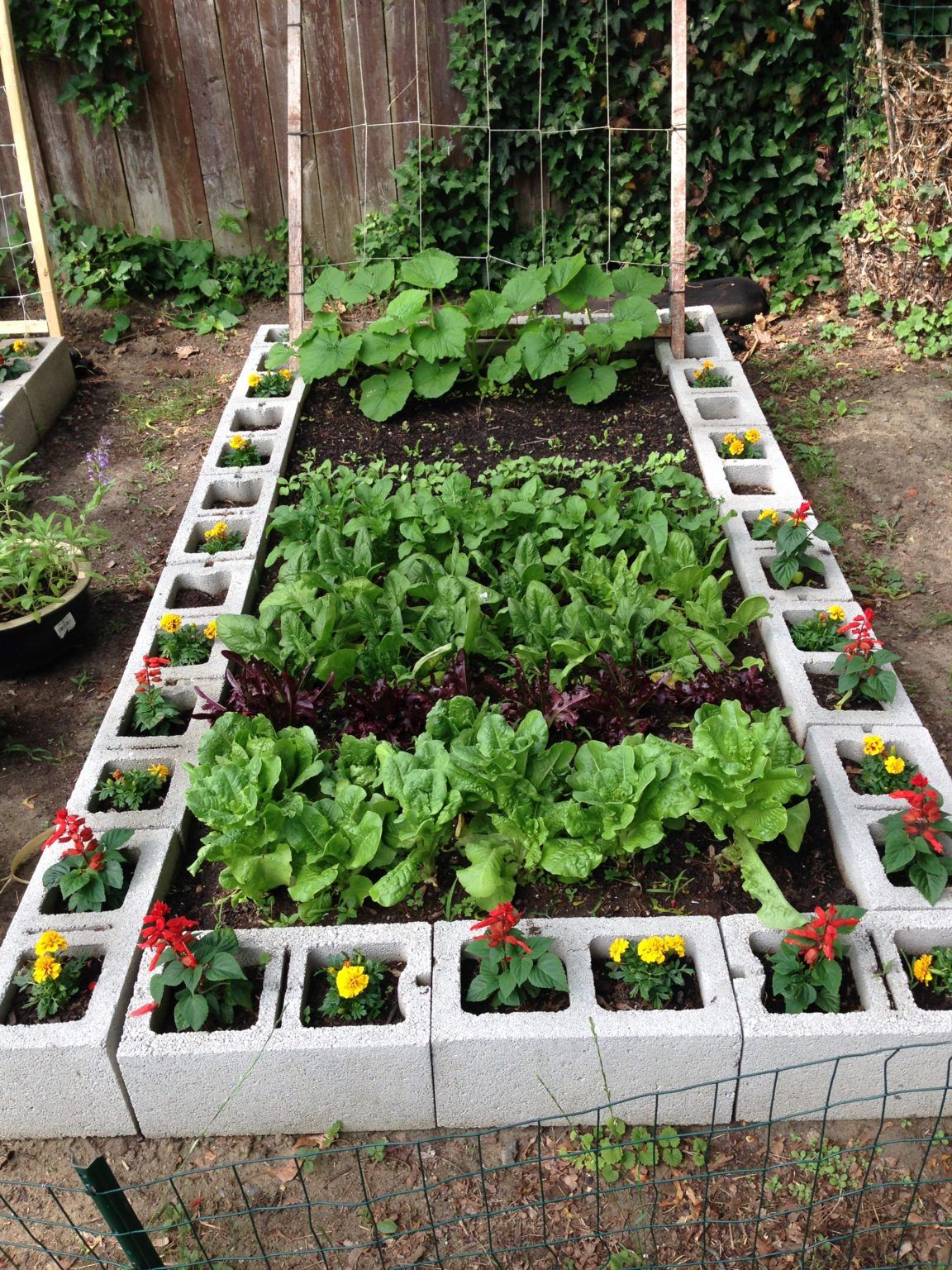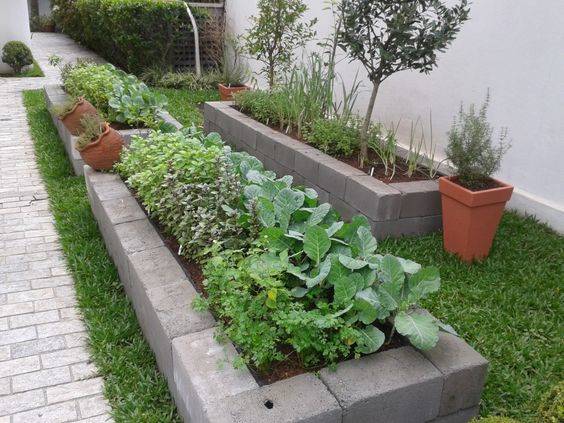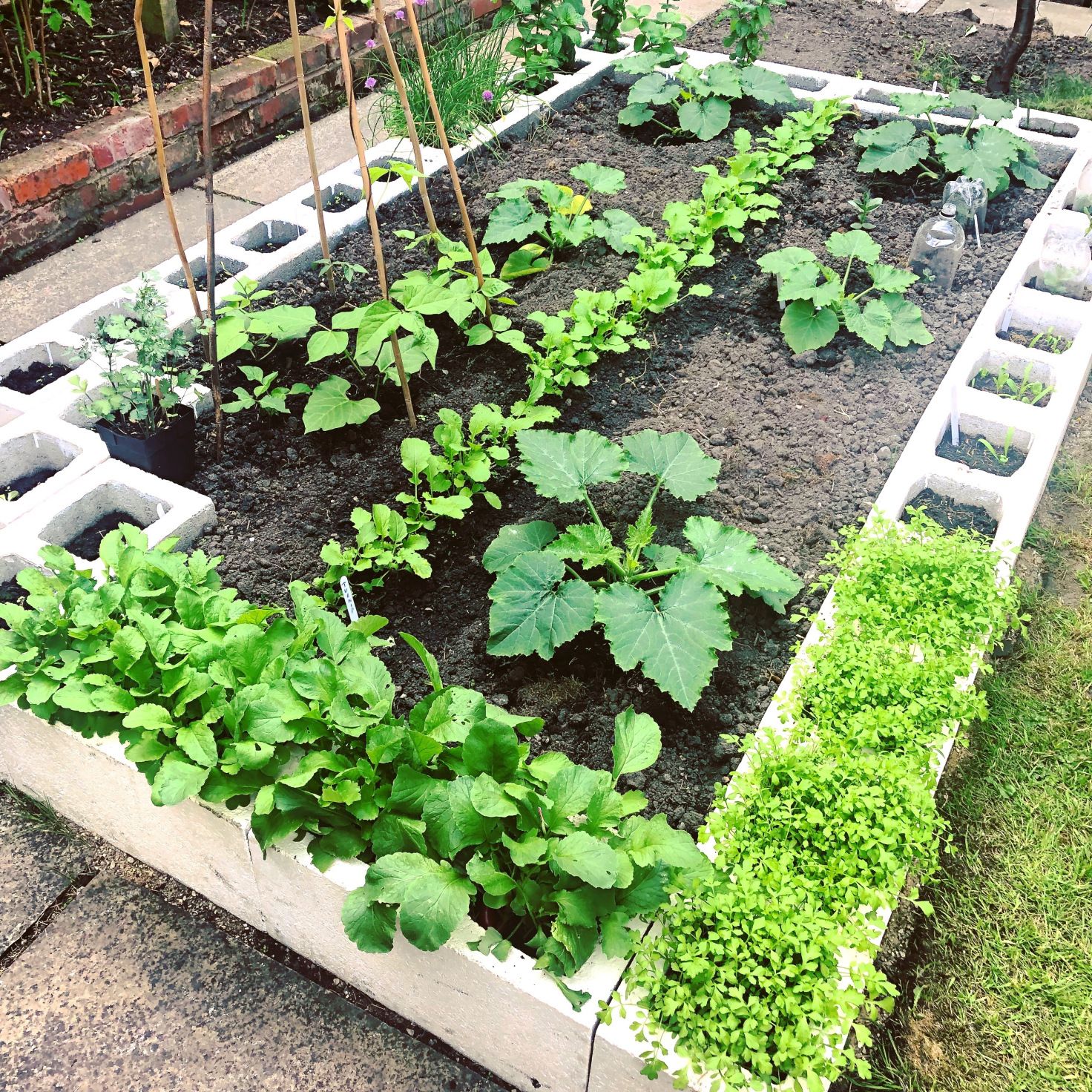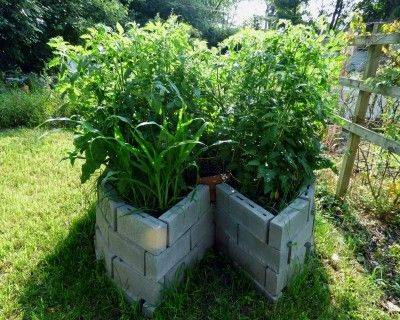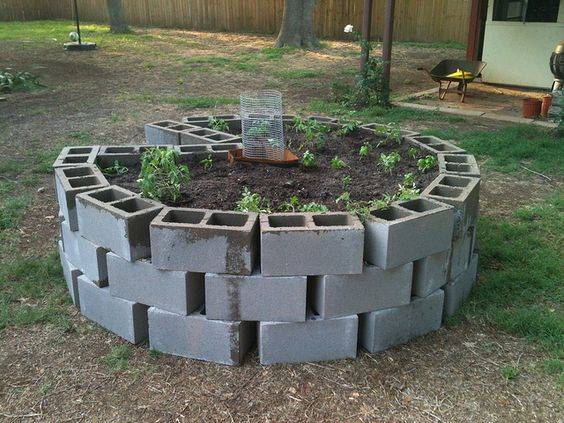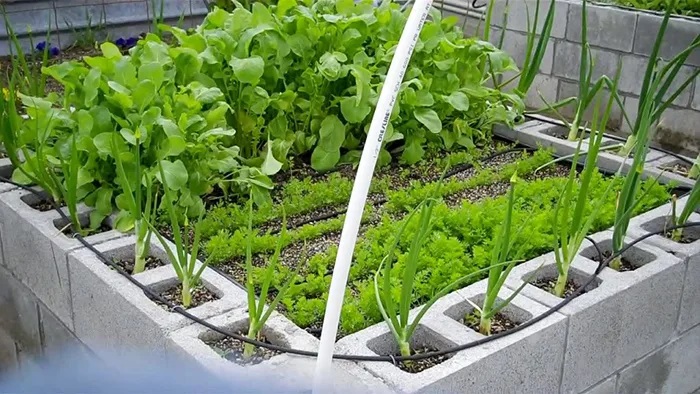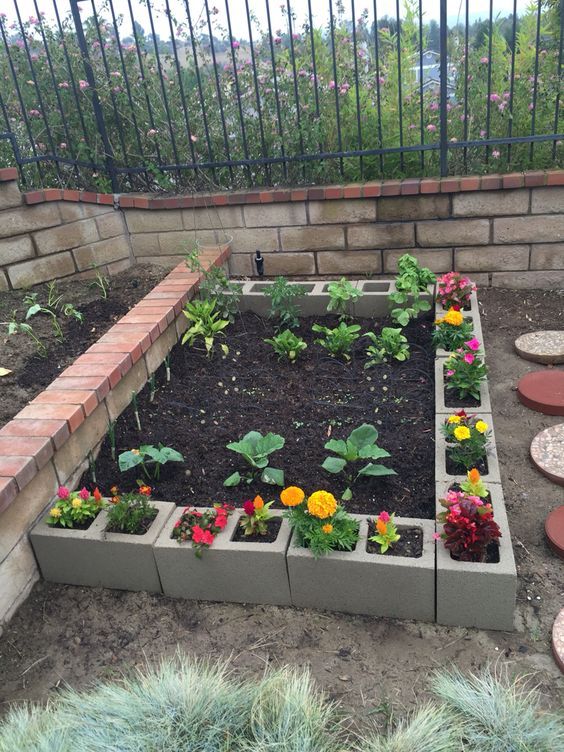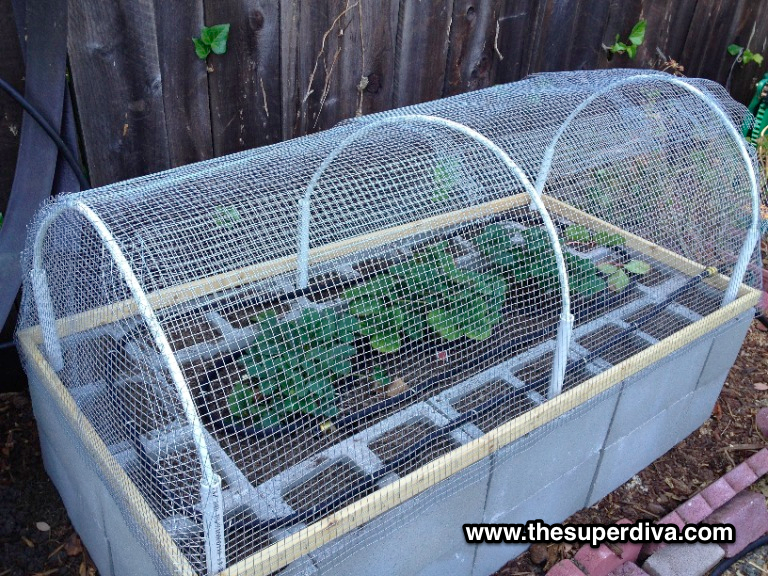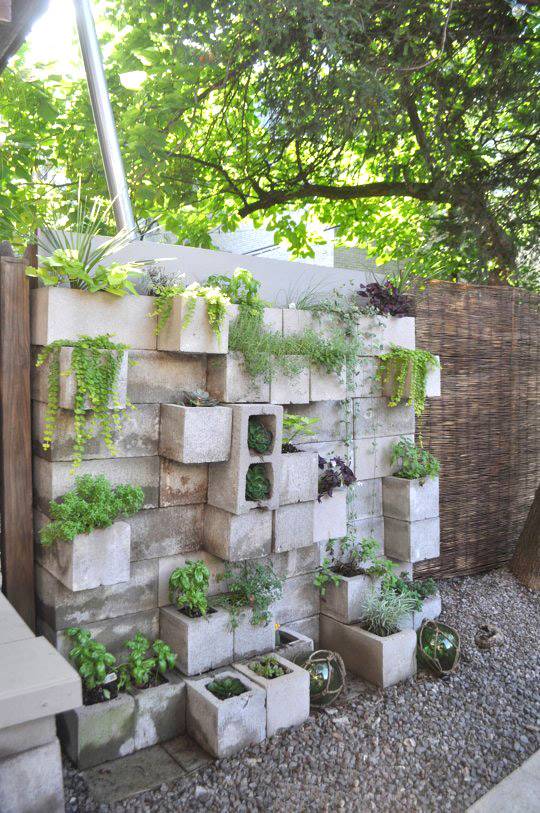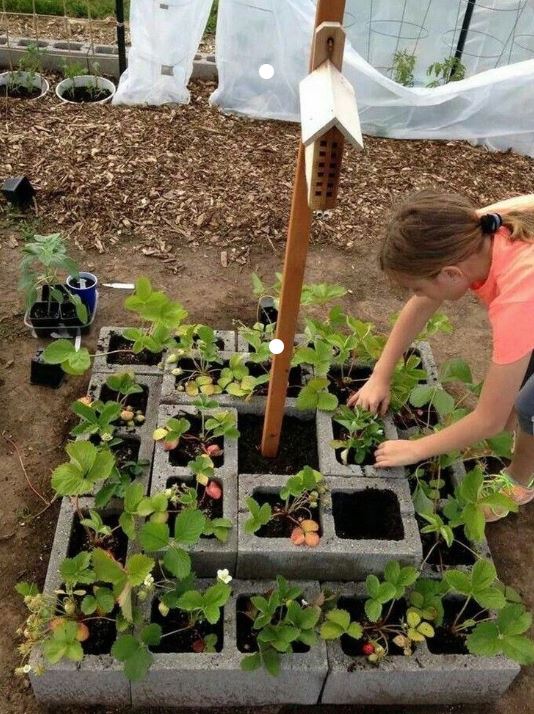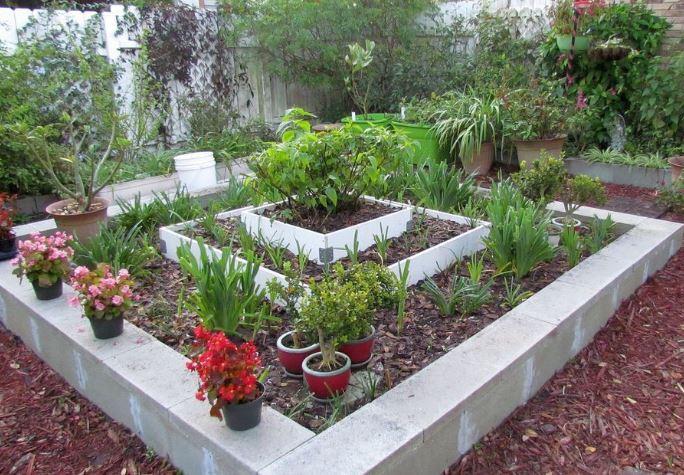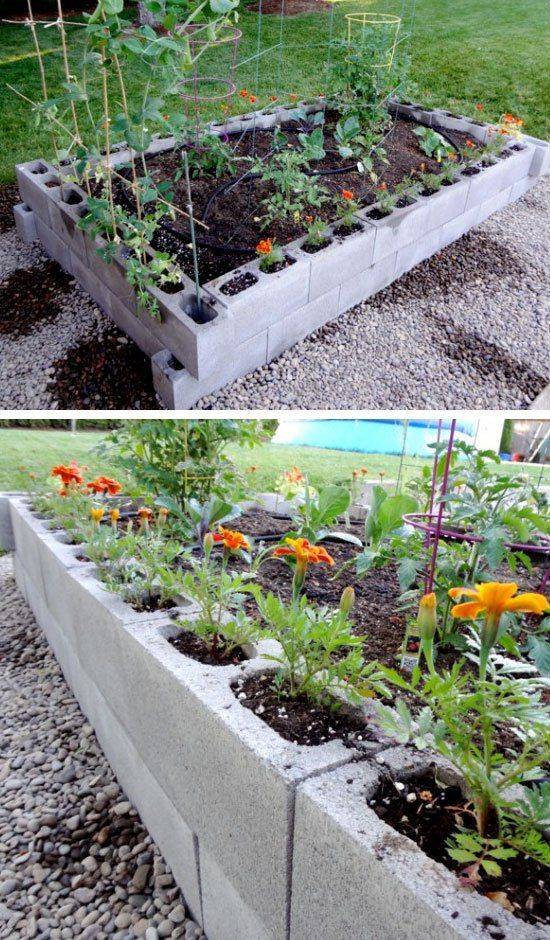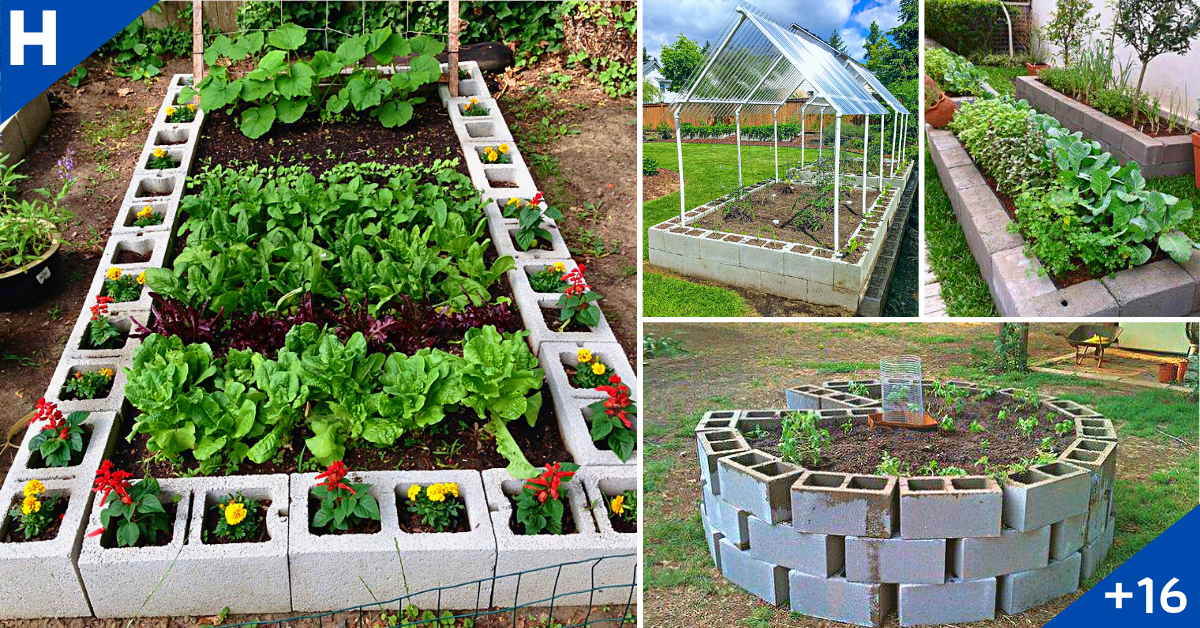
Store-bought raised garden beds come in a variety of sizes and styles, but can be pricey. For those interested in raised bed gardening without the expense, DIY raised garden beds can be build in a few hours (even for beginners) and often for a fraction of the cost of store-bought kits.
How do you know which raised garden bed materials to use? Personal preference and the look you want to achieve will certainly play into your decision. Part of it will be about budget considerations and availability of materials. And you may be concerned with the longevity of the materials you choose.
Concrete or cement blocks, which used to be referred to as cinder blocks, are also an option to frame a quick and easy raised bed. The added bonus is you can fill the two holes in each block with soil for extra planting space—maybe some herbs, lettuces, or alyssum.
Vegetable beds should be 12 to 18 inches deep. The material used to edge a raised bed should be stable, durable and attractive. It is the edging that gives the bed its “look” within the landscape. It also establishes the outline of the bed and holds the soil in place.
Raised beds are best kept to a maximum of four feet (1.2m) wide. This makes it easy to reach the middle of the beds without stepping on the soil. Beds against a wall or fence should be about 2-3 feet (60-90cm) wide, as you’ll only have access from one side.
The bottom of a raised garden bed should be a layer of grass clippings, leaves, wood chips, straw, and other organic material. The cardboard should be placed on top of that layer. The organic material will turn into compost, while the cardboard will prevent weeds.
.
.
.
.
.
.
.
.
.
.
Credit: Pinterest

